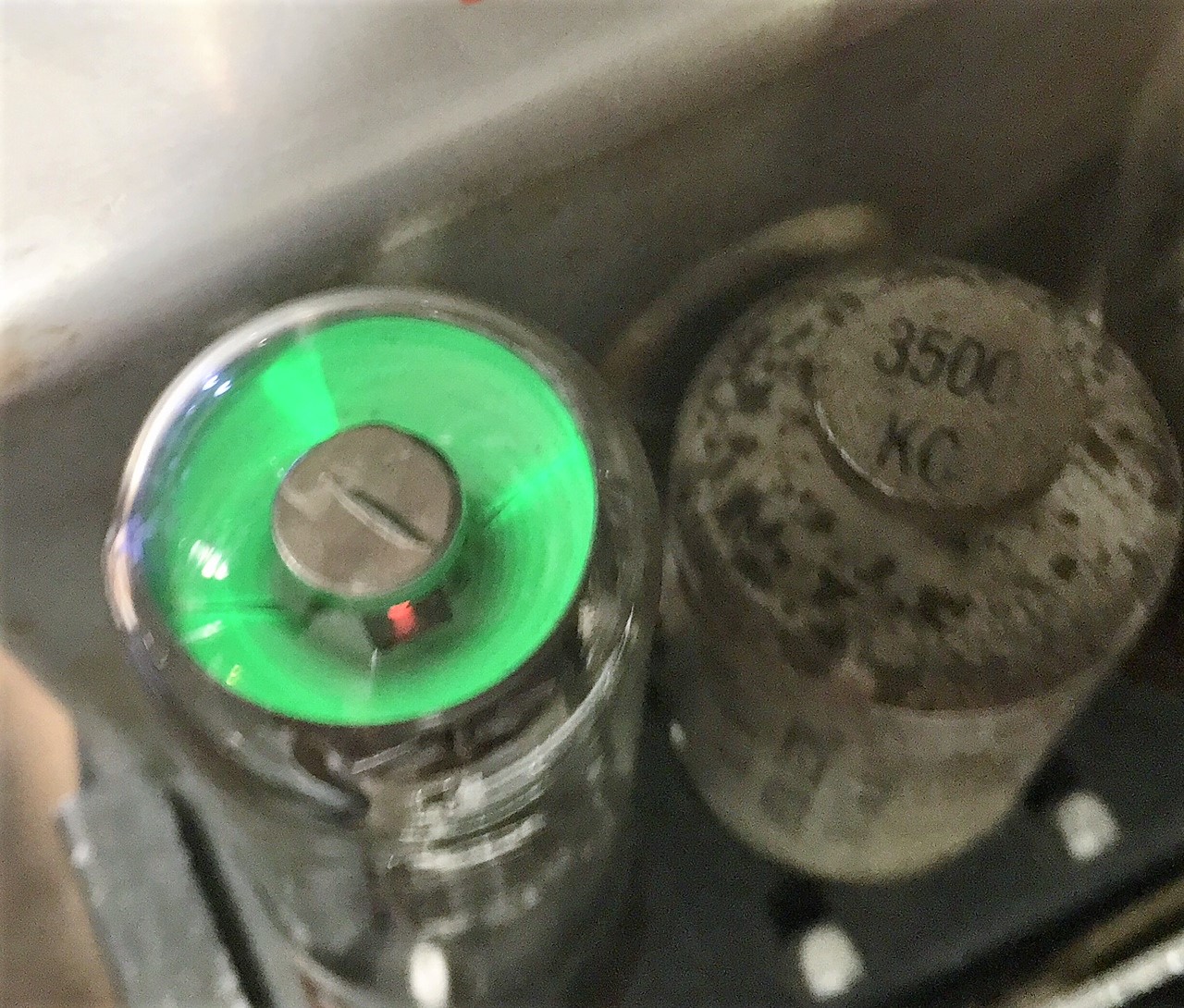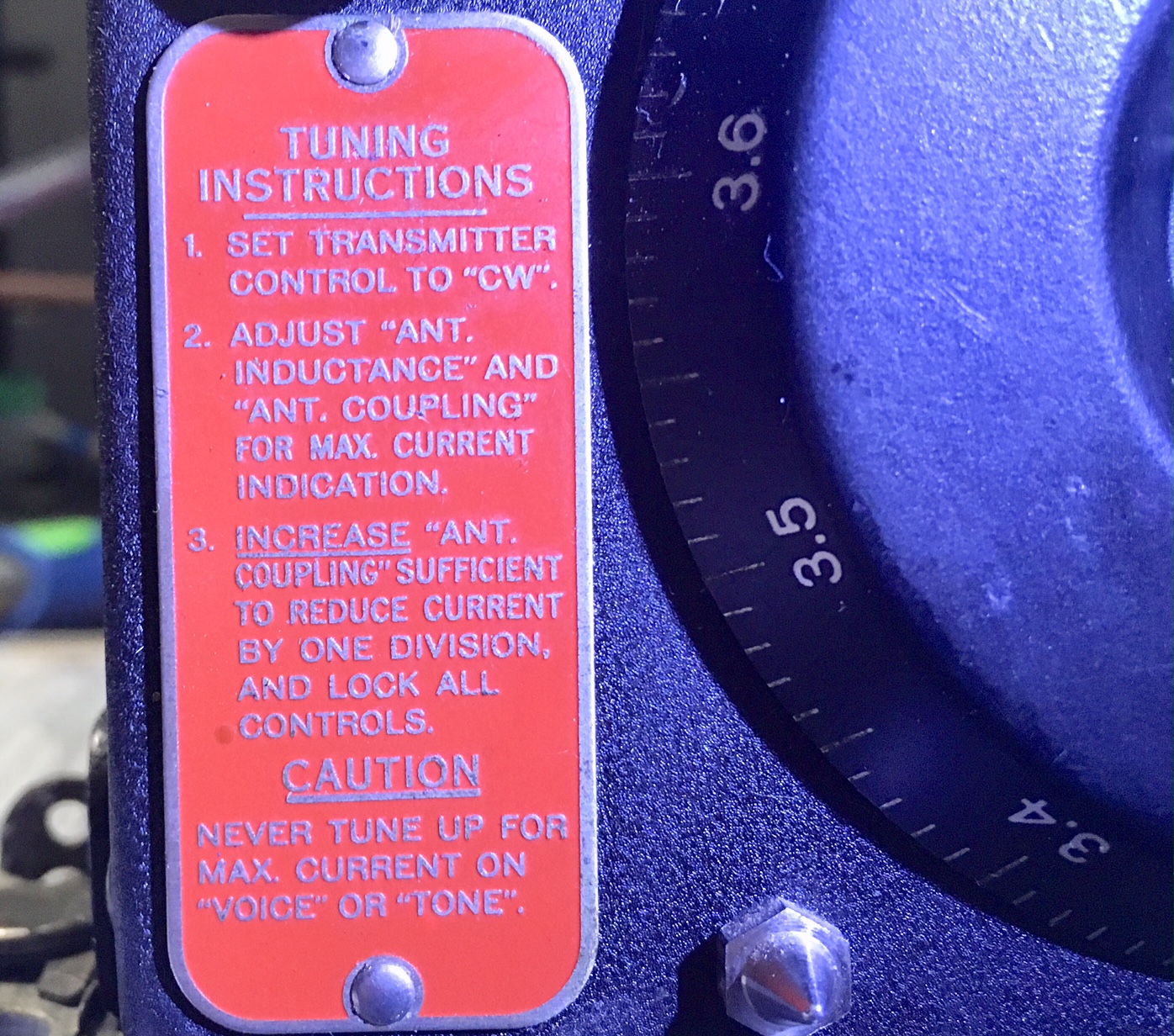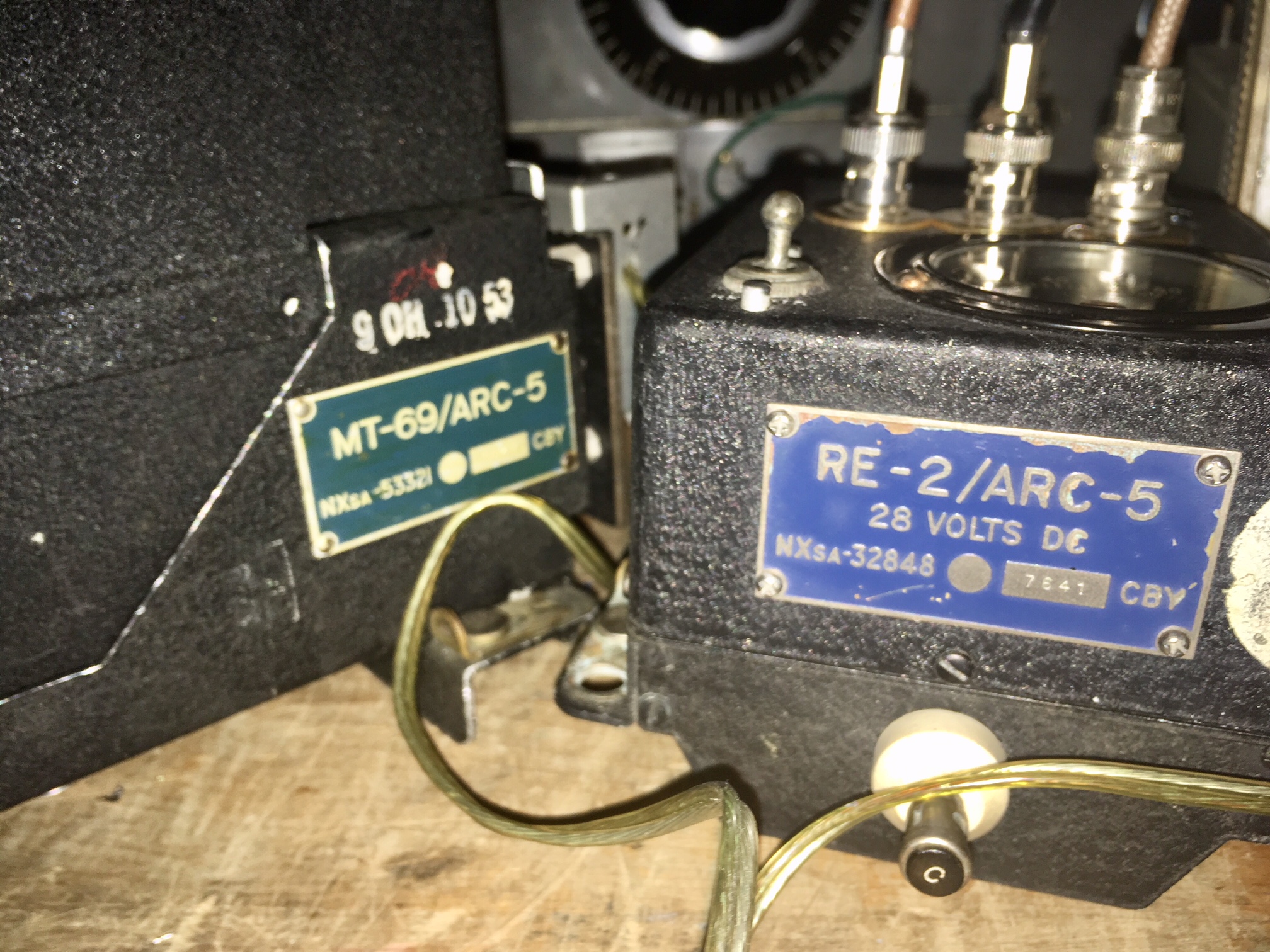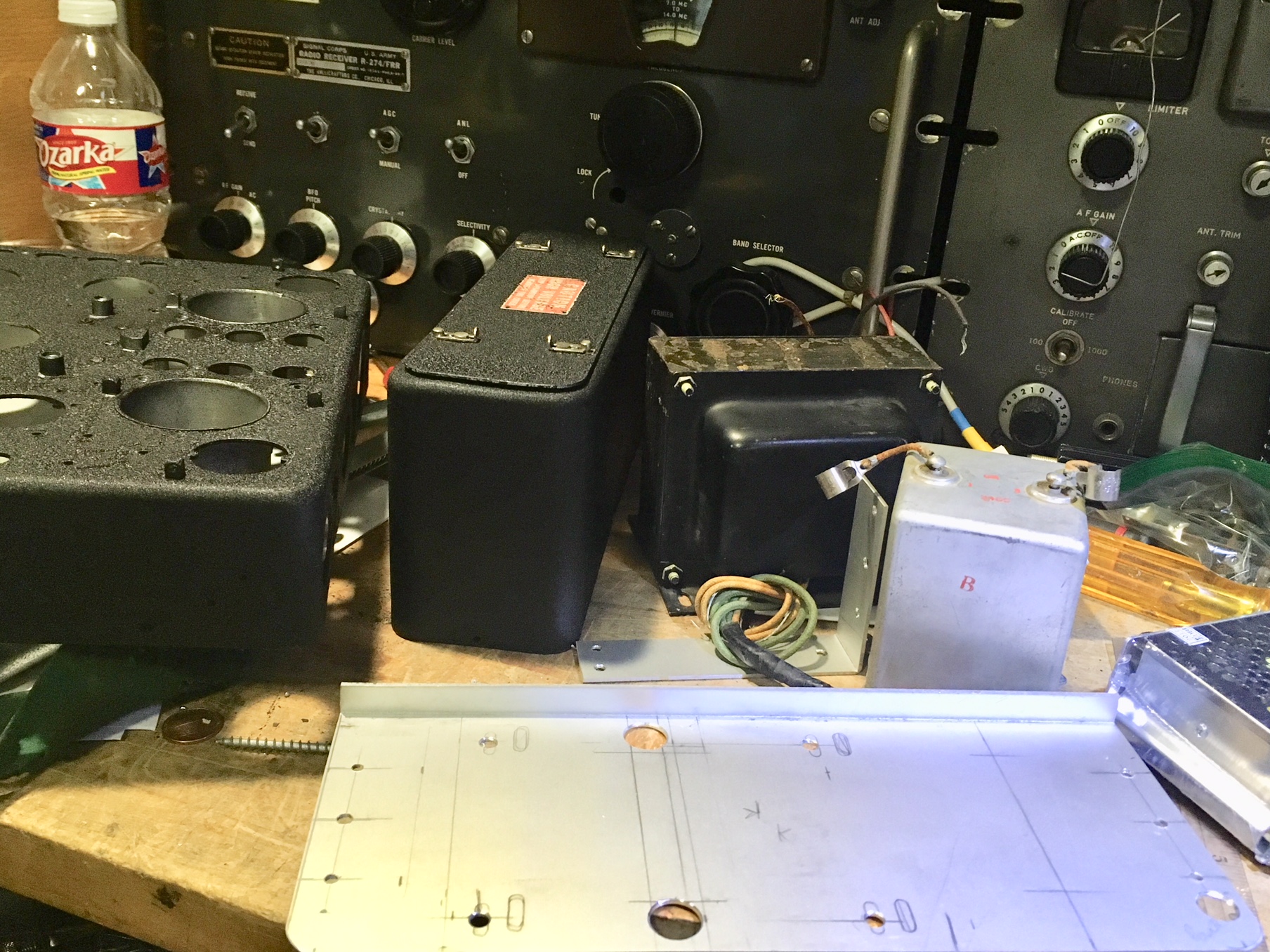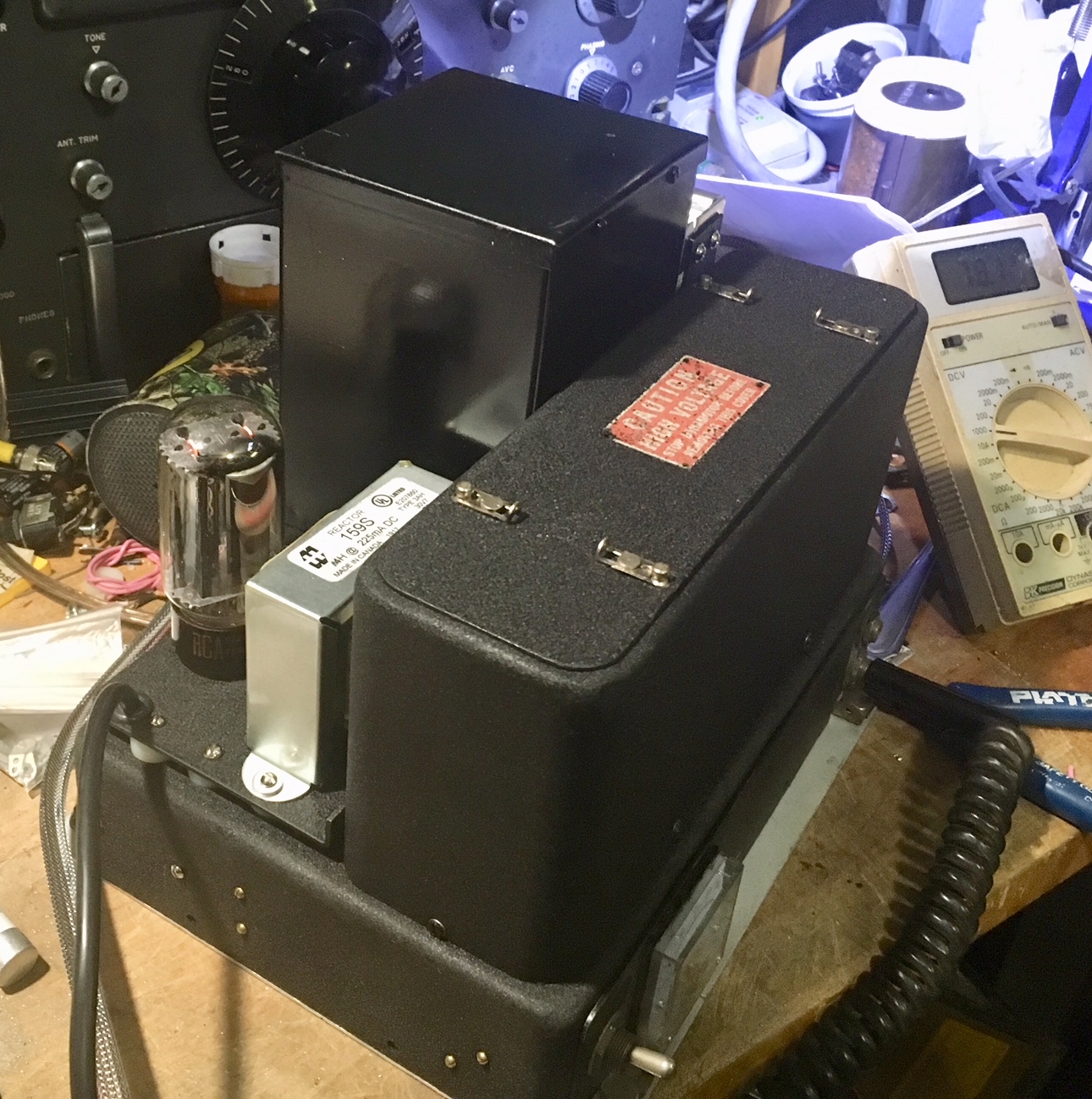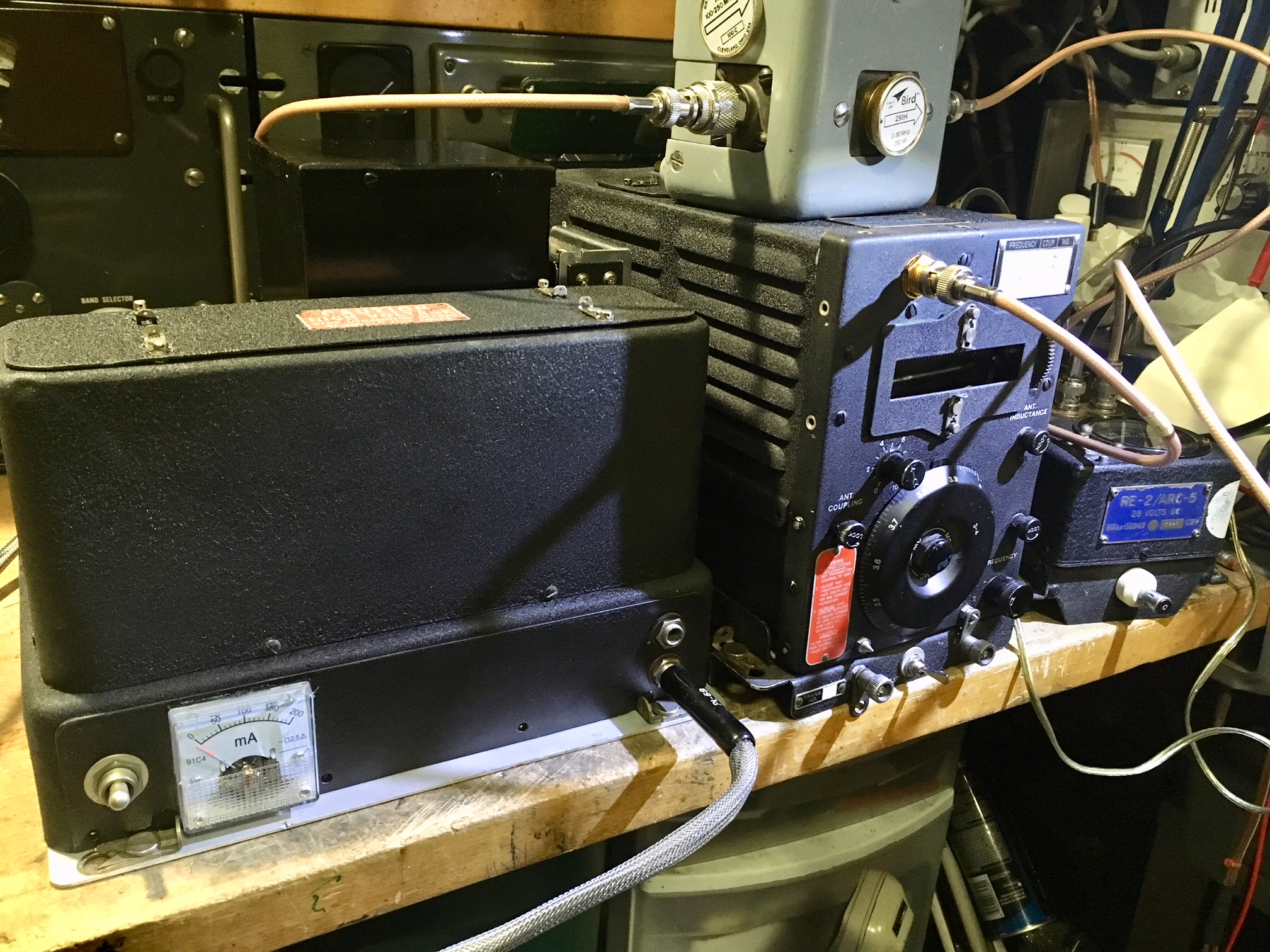Welcome To QSLHAMRADIO.COM
Welcome To "Light Metal"
"Restoration Projects of"
"NE5DX"
***The "Command Set"***
"Heavy Metal"; We all can't be like KA5HRF, most of us just don't have the floor space necessary for REAL Heavy Metal, so we concentrate on "Light Metal". Don't laugh, not everybody likes the old stuff. It's just another aspect of Ham Radio.
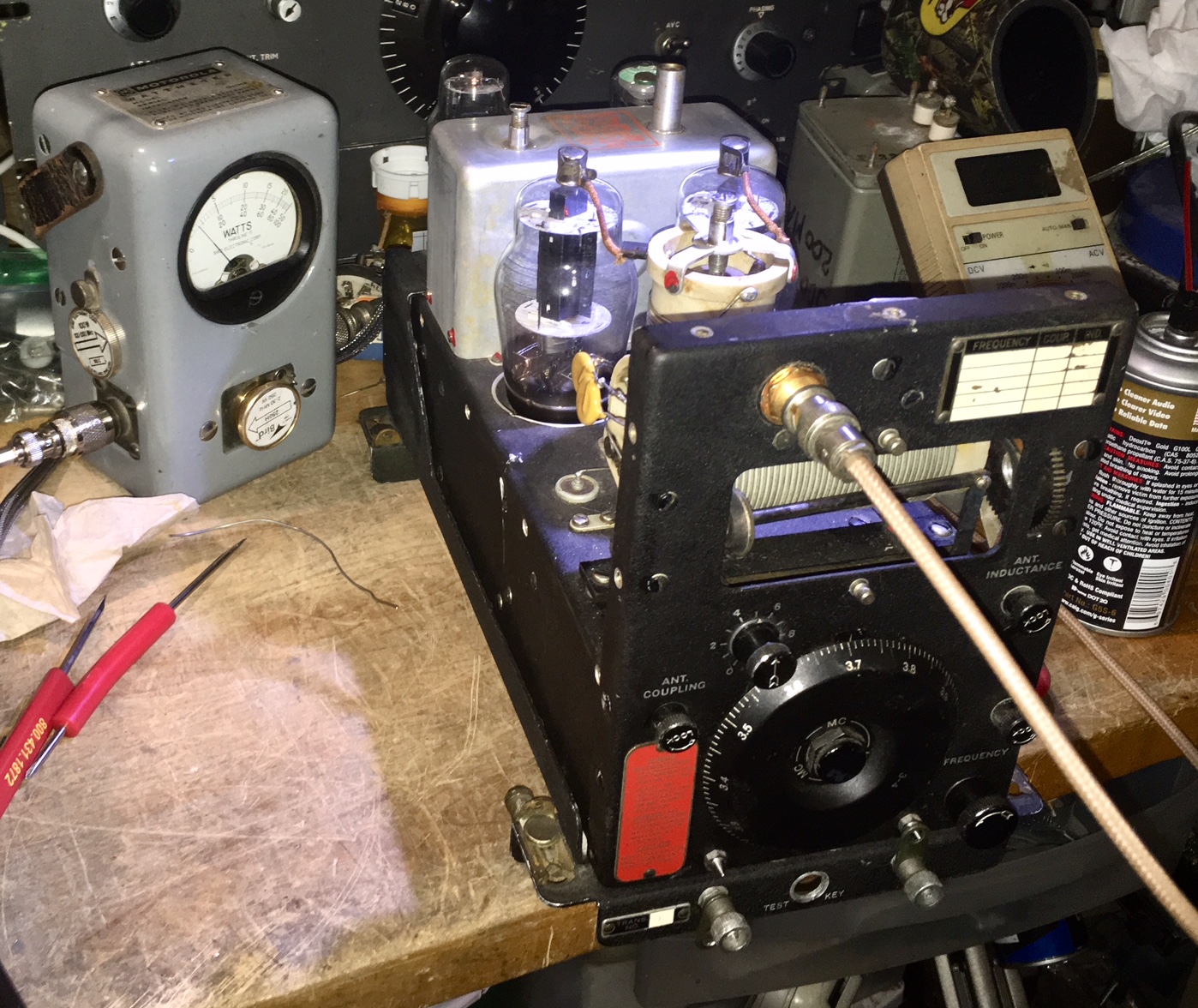
Here is one transmitter from the "Command Set" of which the ARC-5 family of Signal Corps (Army Air Corps) receivers and transmitters belong to. Remember, there was no "Air Force" in WWII. The "Air Corps" was part of the Army. Likewise the Navy used a similar but slightly different version. These transmitters operate on the airplane voltage of 28vdc with the plate and screen voltages supplied from an onboard dynamotor.
This happens to be a T-19/ARC-5 CW/AM transmitter from mid-1943. Minor restoration of the eletronics is complete and it remains to be seen if it will actually work or not! Restoration of the exterior was next and was completed. This type of transmitter was used throughout WWII in many different aircraft. The Command Set units locked onto a rack system where they could be easily replaced for maintenance or band change. The heavy bombers typically had three receivers and two transmitters which were used for short haul and plane-to-plane communications. This is only a very brief history of model differences and doesn't intend to get long and boring.
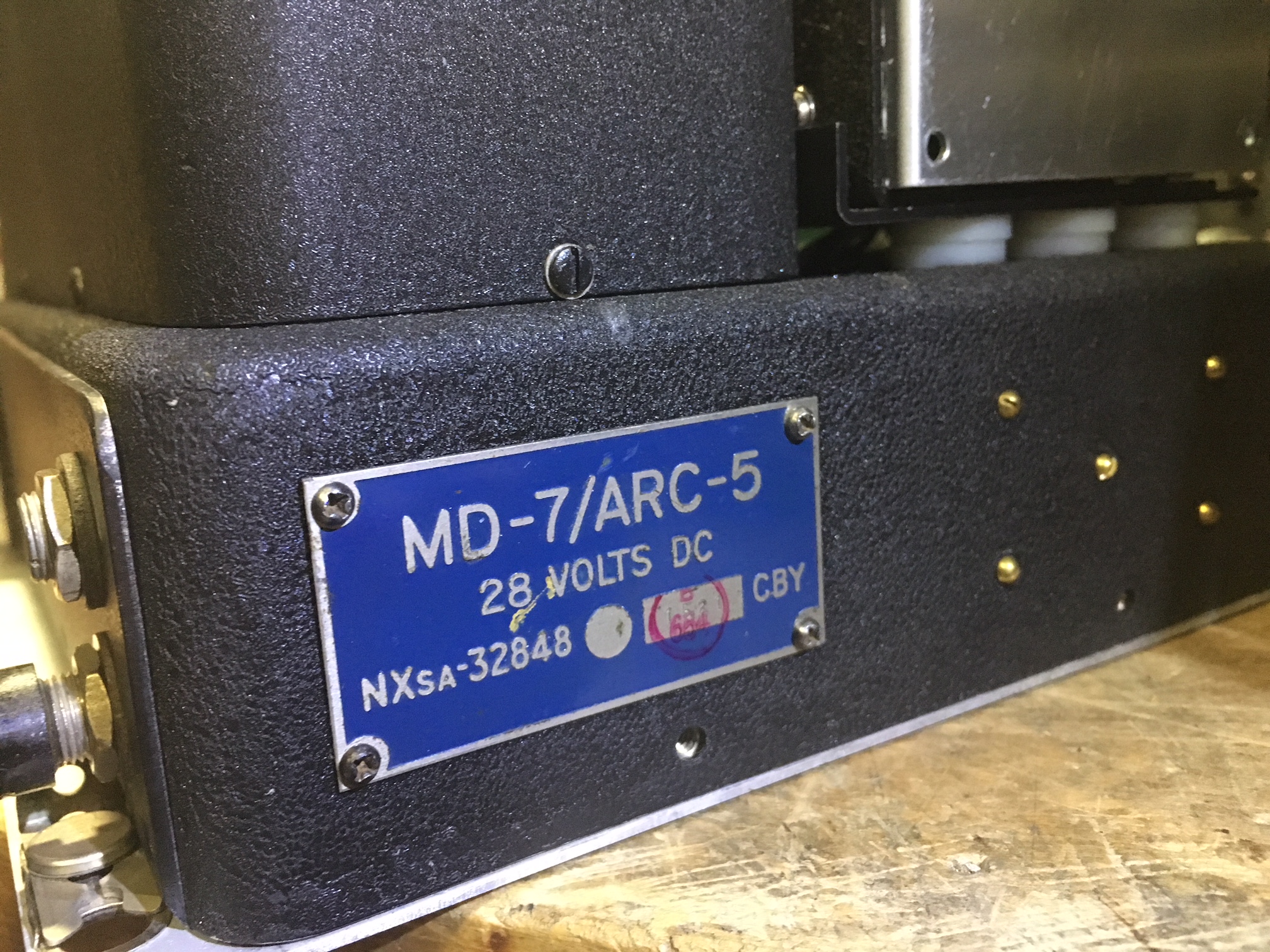
Most of this family of transmitters, when surplused, were put on the air as CW only. It took less effort and was cheaper to do so. For AM phone, an external modulator is needed. This modulator came in at least two flavors, depending on which transmitter type it was destined to be used on. The SCR-274 modulators were screen modulated but to match this T-19 transmitter, the MD-7 modulator is needed which is plate and screen modulated. The biggest problem is finding an MD-7 since they are both scarce and expensive these days. Another issue (don't laugh) is the fact most folks that restore vintage equipment will not "butcher" or "hamorize" anything beyond minor changes needed to make it operate correctly. The cables alone needed to put this thing back in service would give you nighmares.
Fortunately, an inexpensive example of the MD-7 popped up on eBay recently. It had been totally stripped of almost everything. No connectors, no dynamotor or mounts and not much paint left. But included in the auction was a complete chassis with cover and straight metal and the biggest plus, the modulation transformer in perfect condition.
This chassis could be re-purposed easily and with only minor skills (and without drilling a single hole) a power supply could be mounted on it. Without the five large chassis connectors installed, it would be easy to provide only the basic interconnects to the T-19. At the same time the external RE-2/ARC-5 antenna switch could be incorporated into the project.
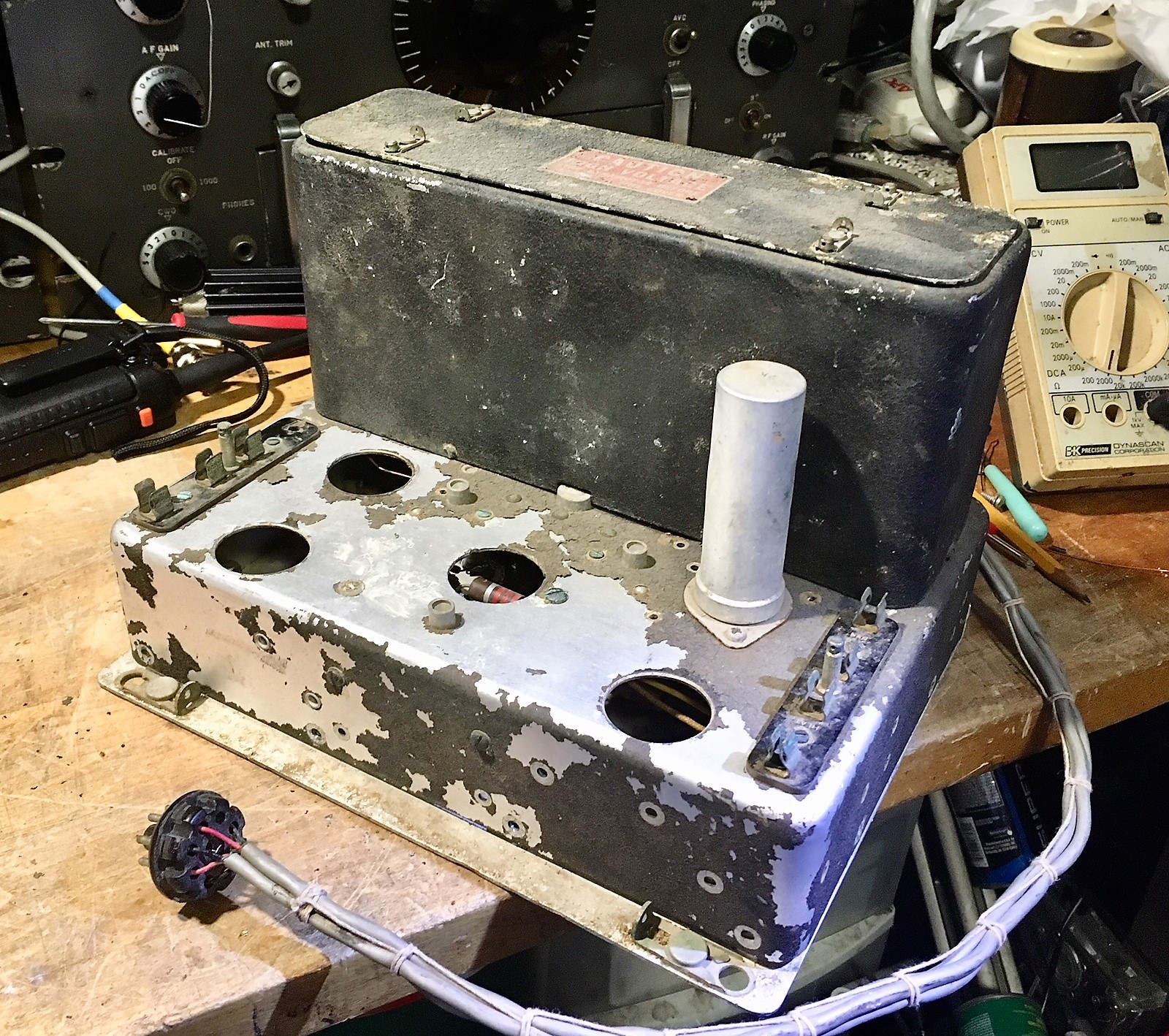
Here is the MD-7 exactly as it looked when received from the eBay auction. It was filthy, dirty with paint falling off, but it was complete and undented. The cover that surrounds the tubes is very thin aluminum (this is an airborne transmitter) but was straight and it even has the base plate.
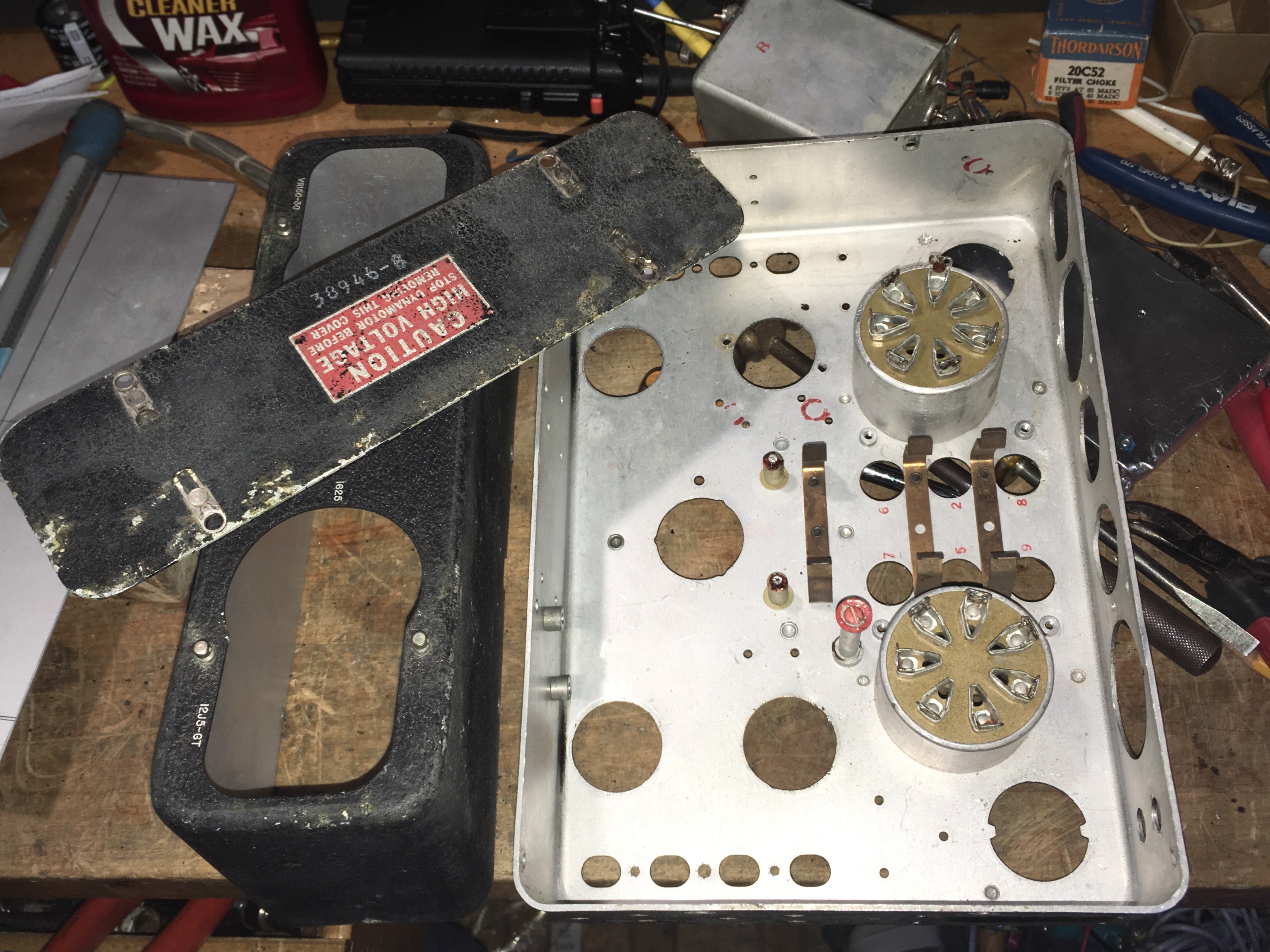
Here is the same MD-7 but after being totally stripped of everything plus a soda blasting to remove loose paint from the outside and the grunge from the bare metal underside of the chassis.
It's now ready for a new wrinkle finish. Overall it looks pretty darn good, considering it's 74+ years old and has probably been neglected for decades. Notice that the light soda blasting was just enough to clean it up but not remove the original markings from the underside.
Jumping ahead, here is the chassis and surround after painting and before a little touch-up here and there. Also completed is the deck plate that will ride above the area where the dynamotor once rested. It will sit on nylon spacers and will bolt down through original holes that are now unused. NO holes, not a one, was added.
Note the super clean modulation transformer with the original plate cap connectors still on it.
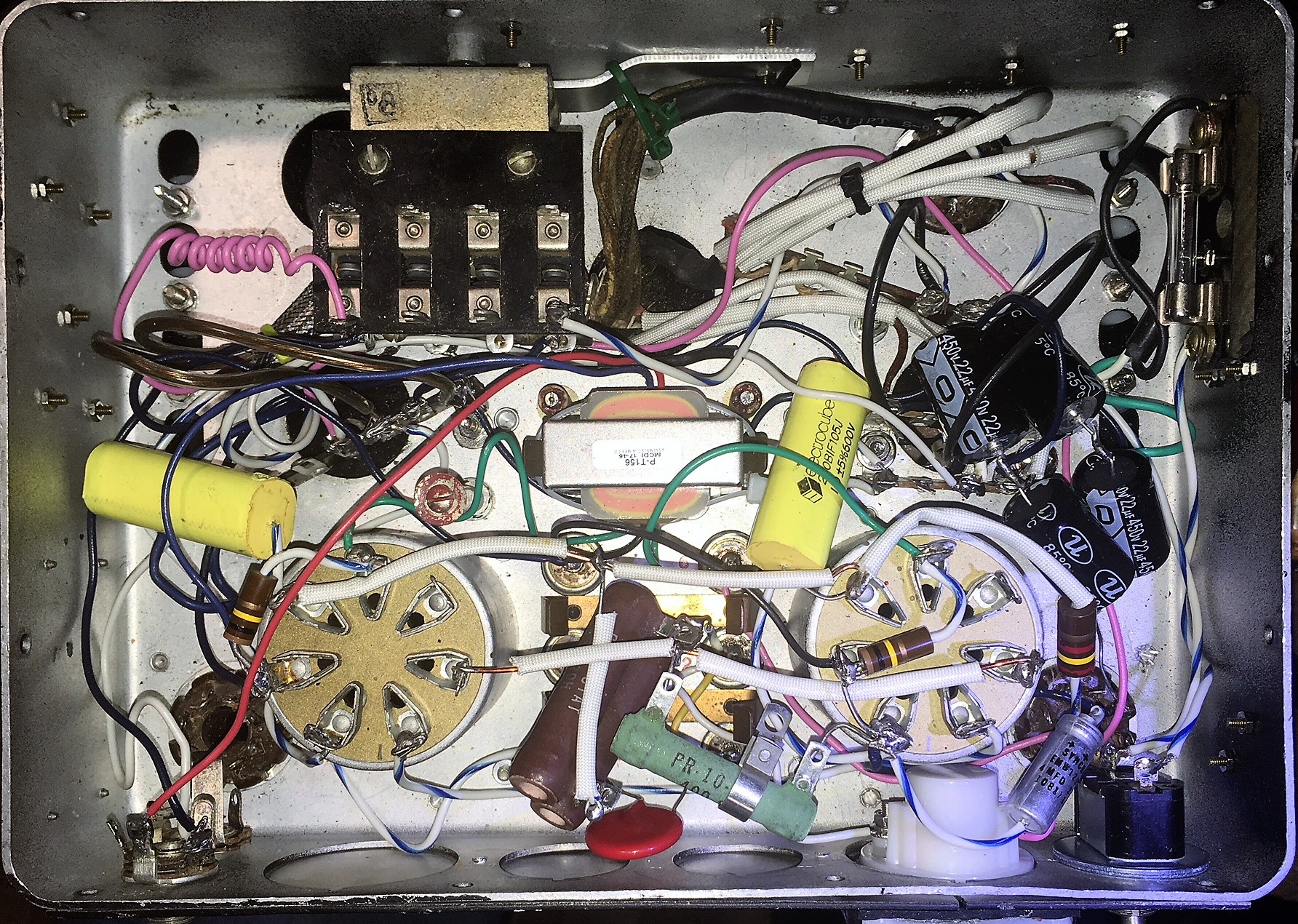
Here's the underside of the chassis with about 75% of the wiring completed. Notice the relay, also salvaged from an old parts donor. The interstage transformer was not there so a new Hammond with the same specs was used. Down the line, a first stage audio will be added thanks to one unused tube socket. There will also be a pilot lamp, audio level control and probably a standby switch.
Here's the almost completed modulator. One thing not mentioned is the addition of a "modern" touch. On the far side of the power transformer is a 28 volt dc, 7 amp switching power supply. This was added to be able to power the original 28vdc relays and supply the correct filament voltage to both the modulator and the transmitter so rewiring would be not be needed. This power supply will also be used to power a matching receiver that will restored next. It will operate from it's original 28vdc dynamotor. Since this "restoration" is to restore functionality and preserve the chassis and not bring it back to 100% original condition, the power supply isn't too much of a stretch. It will allow the receiver to be kept almost 100% original.
Here's the finished transmitter station (minus screws) which includes the MD-7, the T-19 with an MT-69 single rack mount and a RE-2 antenna switch. Until a audio amp circuit is decided on, audio will be pushed to the modulator directly from a Behringer mixer. Power out is in the neighborhood of 20 watts, which could change. Right now, the only mode of operation it's capable of is AM. CW capability will be added later.
